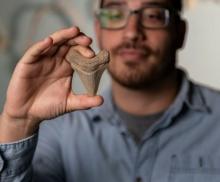
Visiting Assistant Professor of Mathematics Seth Cowall was recently published in the Journal of Plankton Research. His paper, titled “Data-driven Dynamics of Phytoplankton Blooms in a Reaction–Diffusion NPZ Model,” looks at the causes of seasonal phytoplankton blooms in the ocean, which are a debated topic.
According to Cowall’s abstract, the disturbance-recovery hypothesis posits that blooms are initiated when seasonally changing light and mixing conditions disrupt attractive equilibrium states in the predator–prey relationship between zooplankton and phytoplankton, leading to an accumulation in phytoplankton biomass. His paper follows up on this notion with a nutrient-phytoplankton-zooplankton (NPZ) model incorporating diffusion and depth-dependent coefficients in which we explore the nature of these attractive states. The reaction–diffusion NPZ model, incorporated with seasonal solar radiation and mixed layer depth data, simulates blooms with better timing than a related ordinary differential equations model but still leaves room for further modeling and improvement. The results of the data-driven, reaction–diffusion model aid in understanding the driving forces of the simulated phytoplankton blooms. The results also reveal a significant influence on the vertical structure of plankton concentration by the attenuation of light with depth in the ocean. Models that accurately simulate blooms tend to share characteristics of the reaction–diffusion model. The dynamics described in his paper could be a key mechanism that seasonally disrupts the ecological balance between phytoplankton and zooplankton and facilitates a high-latitude marine phytoplankton bloom.



